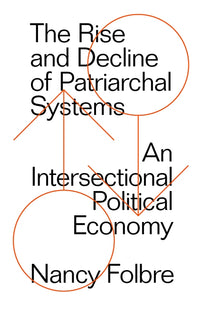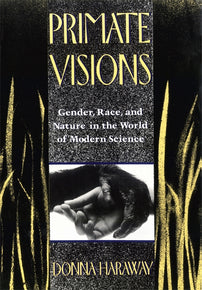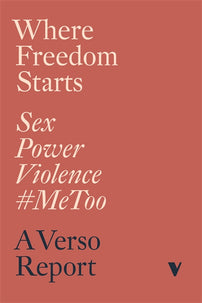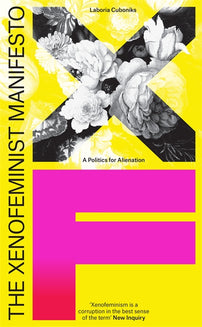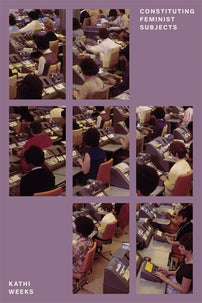Cis Fears and Transphobia: How Not to Debate Gender
A recent call for philosophical debate on gender illustrates how purportedly neutral analyses can be mobilized to reproduce run-of-the-mill transphobia.

There are a variety of reasons why principled feminist philosophers might reject a call for debate on a controversial topic. Frequently that’s because a commitment to one side of a well-worn debate is so strong that even entertaining the other feels like an impossibility, an epistemic violence. At other times, a call for debate can be refused because doing so would legitimize a violent position, or increase the profile and visibility of one that does merit serious discussion. Kathleen Stock, an analytic philosopher based in the UK, recently called for more philosophical debate on gender, and had this call amplified by a highly frequented professional philosophy blog:
Something is afoot in academic philosophy. Beyond the academy, there’s a huge and impassioned discussion going on, around the apparent conflict between women-who-are-not-transwomen’s rights and interests, and transwomen’s rights and interests. And yet nearly all academic philosophers — including, surprisingly, feminist philosophers — are ignoring it.
These are the opening lines of “Academic Philosophy and the UK Gender Recognition Act.” There, as well as in two follow-up extensions of its basic position, Stock invites debate on the competing rights and interests of “women-who-are-not-transwomen” and “transwomen." 1 Yet, is this a promising approach to academic debate on gender? 2
Stock’s set-up seems to suggest that trans women are a threat to cis women’s interests, or worse, that (one of) cis women’s foundational, identity-determining interest(s) is separation from trans women. But this suggestion is not actually motivated, the framing Stock uses to situate it is misleading and, as others have noted, Stock demonstrates little knowledge of either previous theoretical developments or the most likely philosophical responses to the position she is trying to elevate. These criticisms are related. Popular calls for philosophical debate need not take the form of publishable academic essays, but claims for greater discussion can be denied when they entirely ignore or one-sidedly present already robust discourse. 3
Stock is right, however, that academic debates on gender are important. Unfortunately, in her hands this non-controversial fact is used to lower the bar for meaningful debate so far that even unmotivated and dissembling versions of transphobia can clear it. Showing this to be the case will more than merely refute Stock, it will offer a defense of academic feminism as uninterested in the kind of position and the kind of debate Stock is calling for. Two of the minimum conditions for a legitimate call to debate include setting its terms and framework in a way that will likely clarify the most meaningful differences, and doing so in a way that does not heavily bias a potential audience. Since Stock’s interventions are softer than the explicit violence of so many anti-trans positions, and since she offers them as calls for civil debate, how they fail to satisfy minimum conditions requires special attention.
Setting the Terms of Debate
As a starting point, it is helpful to set differences into relief by highlighting what is shared by cis and trans women. It is fairly uncontroversial that all women want to be acknowledged as women. This happens when women have their gender identity affirmed by their families, friends, colleagues, the public at large, theorists who reflect on gender, and the apparatuses of the state. With certain commonplace exceptions (many butches, most drag kings, some cosplayers, etc.) when a cis gender woman is identified as or mistaken for a man, it is likely experienced as a kind of violence. While a similar kind of misidentification or mistake can hurt in different ways for trans women and girls, they too are hurt. 4 Both share the basic interest of being acknowledged as women.
Other shared interests between cis and trans women include being able to pay rent, having access to healthcare that doesn’t force them to justify or prove their gender, and sadly, since both cis and trans women are, relative to the population as a whole, more frequently sexually assaulted, both share the interest of creating safer cultures for women, including by challenging patriarchal domination and determination of what being a “real” woman amounts to. Yet, in the follow-up article, “What I Believe About Sex and Gender and What I Don’t,” Stock is unpersuaded and forceful about competing interests: “like it or not, there are two sets of interests here, not one.” 5 Given such a blunt statement, just how competing interests are opposed needs to be clarified in a way that could be debated by those who disagree.
Yet, without making the claim directly, Stock’s and so many other transphobic positions paint trans women as interested in taking advantage of ratings-hungry media by being “more attention-grabbing than boring old non-transwomen,” and by twisting misogyny and patriarchal dispositions to advance the trans agenda. 6 Really, Stock again: “if you can more easily feel empathy for a vulnerable transwoman in a men’s prison than you can with vulnerable females this changing cultural paradigm also affects (in prison and elsewhere); then, I submit, you are likely to be a misogynist, no matter how you present yourself to the external world. That’s OK — most of us are. Patriarchy made us this way.” 7
If it seems like an obvious nonstarter to suggest that trans women or, really, any gender-nonconforming people are advantaged by patriarchy and misogyny, or that their interests include suppressing cis women’s appearances on media, then you might also begin to wonder why trans women and their interests are discursively contrasted not with cis women, but “women-who-are-not-transwomen,” or “WNT” for Stock.
Indeed, what does Stock intend to accomplish with a debate frame that refuses the “cis” prefix, while approaching the issue primarily by setting up dichotomous identities with dichotomous interests? What does framing trans women and their opposites do for Stock? Are clarifying the terms of debate, avoiding a “controversy about terminology”, and the philosopher’s ingrained tendency toward acronymous foreshortening what really prompts Stock to label cis women as “WNT” and trans women as “TW”?
For anyone who has begun exploring the academic conversation in this area, it should be obvious that Stock is hiding the naturalization of people assigned female at birth with the universal “women”, and then contrasting this categorial determination of “women” (rendered: “women-who-are-not-transwomen”) with the outside and other it names, that is, with “transwomen.” If women who are not trans are simply women and not cis women, then the shared struggles of navigating gender relative to assigned sex, a fraught process for all women, is occluded as a space of shared interests for all women, whether cis, trans, or non-binary. In this way, the very terms of the debate, though offered as provisional, 8 have the effect of precluding equal participation and overstating division. Second, and rather obviously, the violence (remember, all women share the interest of being identified as such) of this anti-trans naturalization of the category “woman” is then hidden with Stock’s controversy-avoidant abbreviation “WNT.” If the debate is to be entered in good faith WNT won’t do.
Beyond the play of terms, there are two general strategies open to denying trans women their womanhood or motivating more engagement with a position that would do so. One is to point to the negative consequences stemming from accepting trans women as women, and another is to attempt an ontological distinction. I’ll deal with the consequences-based strategy first, then the ontological one. While Stock’s particular approaches to both are crude, they can be read as object lessons in the basic approaches and resources of anti-trans feminism more generally.
The Consequentialist Strategy
The consequentialist argument rejects the thought that trans women are women out of a desire to protect women in cis gendered only spaces, more often than not, in bathrooms. Forgetting, or not caring to deal with the multiple, empirical refutations of this dangerously alarmist strategy, Stock instead opts to carve out space for fear in the passive construction of “It is anticipated that unscrupulous men will use…” to re-center the “worries of WNT,” regarding this “potential for harm.” 9 Stock relies on the fear that cis women will have if trans women have access to their formerly (supposedly) exclusive spaces. Stock forgets that cis passing trans women have already had access to these spaces for a long time, and that such access has in no way justified or even caused the fears she wishes to first magnify, and then use to divide women’s interests.
Stock’s rhetorical approach is professional, neutral, and achieved through repeated calls for level-headed, even-handed, dispassionate debate about gender issues — because these debates have real political and practical stakes. Yet, even while maintaining that she isn’t convinced that trans women aren’t women, and while insisting that she is only presenting the “Gender Critical” position for its considered investigation (“Gender Critical” because “‘TERF’ [Trans-Exclusive Radical Feminism] is a slur”), Stock stacks the deck in her approach to consequences in ways that actually promote transphobia.
By preferring to combat the “potential for harm” from lascivious males just waiting to take advantage of the opportunity to disguise their perversions by claiming to be trans women, rather than the actual harm of gender-denying, trans exclusive cultures and spaces, Stock loses any right to the title of inviting even-handed discussion. In an extremely outlandish account of patriarchy, which wouldn’t be so amusing if it weren’t at the same time such a distorted version of feminist analysis, Stock suggests that patriarchy explains the rampant pro-trans academic bias that endangers cis women. To her, living under patriarchy explains why so many are sidelining cis women’s potential fears about lascivious men faking their trans identities and are instead choosing to side with trans women — by which she frequently seems to mean men just pretending to be women. 11
To recap: Since trans women are really, just men, patriarchal solidarity allows trans women’s cis women threatening perversions to be accepted as more important than developing social concern for real women. Accepting trans women’s identification is thus a consequence of and a contribution to patriarchy. If it looks like all the cis normative elements of patriarchal culture do not fit into Stock’s analysis of the consequences of patriarchy, that would be because they, in fact, do not. Incidentally, more than most other strategies, the social analysis of patriarchal solidarity gives the lie to Stock’s faux-neutrality. If Stock thought trans women could be women this argument would not be developed the way it is.
Another consequence Stock is worried about is trans infiltration of political spaces, by which she means, it is wrong to allow trans women to be recognized publicly as women for the purpose political agency. The Labour Party should not allow trans women to stand for election as women because they couldn’t possible represent cis women as women. Given Stock’s over-sexualization of trans people and her willingness to conflate actual trans women with imagined male imposters, it should come as little surprise that trans inclusive Labour Party policy prompts her move to entertain (by which, and despite her faux-neutral posturing, most readers will legitimately infer, advocacy for) the legal erasure of trans identities tout court. 12
So, we are left with a version of an academic, fear-based feminism with a commitment to radical personal, public, institutional, and legal excision of trans people. Although Stock would prefer to fashion this Gender Critical or “GC”, I will instead opt for “AFRET” (Academic Feminism Radically Excising Trans people). “Excision” is more appropriate than “exclusion” as it marks the conceptual and practical violence of the position. Whereas “exclusion” may merely maintain the distinction of what is already separate, “excision” better names the procedure of carving out, ejecting, and reversing development. So, Stock’s position is AFRET. In addition to phonetically centering cis women’s fears, which Stock acknowledges as the root of her consequence-based argument, “AFRET” may be preferred over “GC” for the simple reason that only and absolutely mapping gender onto (social response to) biology is not a gender critical position, nor even a conservative one, but in truth, a reactionary determination of gender.
The sex-based moral panic and fear at the root of the AFRET position, as well as ones like it, are not helpful grounds for producing healthy philosophical debates. In themselves they don’t even motivate a coherent philosophical position worth consideration. Yet, Stock takes theoretical silence regarding the ontological scope of “woman” as a consequence of pro-trans social domination (this silence is actually non-existent). Over-inflated and irrational social concerns with not being or appearing transphobic are, for her, constraining exploration of what would be a productive problem-space, or a “juicy issue.” We should then pay attention to how the AFRET position constructs such a fruitful terrain and then squeezes it through fear and phobia.
The Question of Fears and Phobias
Before turning to the ontological strategy, we can explore the role of fears and phobias motivating and possibly silencing the AFRET position. Like most anti-trans positions, AFRETism insists it is not transphobic. But, what is transphobia for Stock if it is first, a real social phenomenon, and second, not motivating the AFRET position?
As will be easy to show, Stock cannot travel this narrow path, not due to any overinflated account of “transphobia”, but by her own lights. For Stock transphobia is “a hatred of or prejudice against transpeople simply because they are trans, founded in disgust, shame, or some other related negative emotion.” In other words, AFRET’s radical excision need not be transphobic if it is rationally, philosophically determined. Yet, Stock misses that “prejudice” is exactly how to describe cis gender fears of the potential that accepting trans women as women would make them more vulnerable in women-only spaces. 13 There is so vanishingly little evidence to justify this fear. So little, in fact, that Stock is forced to rely on flimsy 14 and easily 15 refutable 16 examples. 17
Prejudice, or perhaps disgust, also motivates Stock’s otherwise inexplicable notion that it “seems important to at least mention when discussing what is at stake for non-transwomen,” the fact that “Most people now coming out as transwomen will not have surgery on genitalia; if they have it at all, they are more likely to have it on facial features and upper bodily features, and a substantial proportion will not have any.” 18 It is hard to envision what, besides normative assumptions about what women ought to look like, in other words, prejudice and perhaps disgust, would make this fact about surgeries — either above or below the belt — so important. As we’ll see, Stock has mixed feelings about surgery.
Despite denials of transphobia, AFRETism and positions like it regularly miss how “disgust, shame, or some other related negative emotion” are highly likely candidates for explaining the already tired, reactionary, two-step strategy of rendering trans women’s existence predominantly in terms of their assumed sexuality, and then rendering this sexuality via genitals as “legitimately” fear-inducing. This is just old-fashioned fear of trans women’s sexuality, especially when that sexuality involves bodies with, gasp(!), a penis and testicles.
Fear then, explains both the necessity of promoting the AFRET cause and the impossibility of articulating it publicly. Stock suggests that non-philosophically normed online behavior makes people afraid of publicly being AFRET. Trans women and their academia-dominating allies are so successful and fear-inducing in the pursuit of their anti-cis women agenda that debate has become nearly impossible. Perhaps this explains why, despite nearly 6000 words, and demands like “philosophers need to stand up more vocally, on social media and elsewhere, for the permissibility of the,” AFRET position, at no point in the first two articles does Stock offer anything like a philosophical argument in favor of being AFRET. 19 There are fact-lists, sociological conjectures, and personal anecdote, but no actual steps towards philosophically defending the position or motivating its debate.
This is all clear to a careful reader, but in one of the follow-up pieces Stock provides a definition that obviously showcases her position’s transphobia. Stock holds that “to say that someone is phobic about something suggests that they either consistently feel threatened by its presence (which will then be manifest in behaviour in a generalised way e.g. fleeing it, displaying extreme anxiety in its presence); or hatred or disgust of it.” 20 Now, since Stock thinks that cis women’s fears of trans women justifies cis women only spaces, that is, fleeing the trans threat due to the extreme anxiety it produces, she might as well hold that transphobia is legitimate. On the basis of this definition it also follows that AFRETists are transphobic in the sense that they consistently feel threatened by the presence and defense of discourses that criticize excision. Oddly, this provides a fine sociological insight into AFRETism: feeling attacked or threatened prompts charges of their own exclusion as well as attempts to shift the terms and frame of debate in a way that centers their anxiety.
The Ontological Strategy
Now, to dispel the worry that I’ve engaged in that vile bogey of pro-trans misrepresentation, or that I’ve maligned a position with philosophical merits without engaging them, let’s turn to the deeper, ontological argument.
In the third and final article, “Arguing about feminism and transgenderism: an opinionated guide for the perplexed,” Stock does begin a philosophical argument for the AFRET position. 21 I respond between paragraphs with a kind of running commentary as I quote, in full, Stock’s most developed justification for mapping gender and sex assigned on the basis of biology. She ventriloquizes a possible objection — “If you make biology and reproduction essential to womanhood, you are doing nothing more than ‘fetishizing body parts’. In fact, female biology and reproduction are only contingent features of womanhood. Not all women have them” — and then tries to respond:
This is an implication of the view that says transwomen are women. Now, for most WNT, it’s central to their sense of self-identity that they’re women, not men. For many, it’s equally central to their self-identity that, as a woman, they have a female body. Women are socialised into the world as a certain kind of entity, with a certain kind of body, and taught to relate to themselves as such — a body whose shape and age can determine perceived worth in their own and others’ eyes; a body that can cause desire in both lovers and sexual aggressors; a body that bleeds once a month and often causes pain and tension in the process, or doesn’t bleed and causes anxiety on that account; a body that can produce children, both desired and unwanted, or a body that cannot, and is judged defective for that reason; a body that is constantly monitored by the self and by others for shrinking and growing; a body which can be sexually entered, or photographed, or filmed, for money; a body that can causes feelings of shame, or happiness and pride, when one looks in the mirror; and so on.
The idea that biology provides only contingent features of womanhood is not an “implication” nor an assumption, but a well-defended middle point that frequently prompts the conclusion that trans women are women. Stock, then, is too narrow on a crucial point: for most women, not just most cis women, the “sense of self-identity that they’re women, not men,” is quite central. The sense of self-identity people have is indeed tied the sense they have of their gender, but it is odd that Stock would limit this to cis women given what is at question here. While it is true that “for many” having a “female body” is central to their identity, this fact doesn’t push the argument forward at all. The question is whether having a “female body” is necessary for self-identifying with the gender “woman”. That many ground their gender-identity through their body’s assigned sex does not mean that the body’s assigned sex is the only, best, or even a necessary source of gender-identity.
To then hold that “women” are socialized through their bodies is, of course, valid, but Stock is here assuming what she has yet to prove, namely, that to count as a woman such a body must be assigned the sex “female”. Yet even here, with one possible yet ultimately unconvincing exception, everything Stock says of assigned-female bodies entirely holds for trans women’s bodies as well. Trans women’s bodies are socialized, self-relational, judged in light of their shape and age, capable of causing desire in lovers and aggressors, have complex relations of pain, tension, and anxiety due to bleeding (or not bleeding), assessed for fertility, monitored for size, can be sexually entered, photographed, filmed, and finally, can cause shame, happiness, and pride.
Of course, trans women born without uteruses cannot “produce children,” but cis women’s bodies cannot produce children either. All bodies with uteruses need a partner to produce a fetus. To be generous, perhaps Stock meant that “woman” ought only describe those whose bodies can carry fetuses by virtue of having a uterus, or are judged defective because such bodies either lack a uterus, or have one that cannot carry fetuses to term. Yet, in countries with eugenicist and colonial histories like the UK and the US, we do not have to stretch our imaginations to find women with no (or with “defective”) uteruses who are, by most non-AFRET positions, still women. And this isn’t merely old news. In the 21st century tubal ligations were performed on California inmates who surely, most would want to hold, remained women. Then as now, women with uteruses were denied their capacity to carry fetuses without ceasing to be women, precisely because their uterus’ functionality (in eugenicist logic “too functional” uteruses) marred them as “defective” women. One consequence of insisting on this uterus point would be requiring either:
1) by virtue of their hysterectomies, genetic inheritance, or tubal ligations, no matter if the source is a eugenicist state, chance, or personal choice, all such women are or are socially judged “defective” (an illiberal and socio-historical absurdity),
2) those not judged “defective” for such lacks are actually men such that, upon conviction of an incarcerable offense, despite any personal self-identity, they would have to be housed in a men’s prison (I doubt Stock is willing to accept this consequence), or
3) women are neither necessarily “defective," nor necessarily socially judged “defective” for such lacks. Of course, this would mean the “defective” label is a contingent rather than necessary, and that the biology and status of a uterus is contingent rather than necessary for being a “woman”.
If, contrary to the GC view, women are to be encouraged to view their identity as women as divorced from such bodily facts, then conceptual and discursive space needs to be aggressively maintained by academics, simultaneously, to allow WNT to carry on talking confidently about these things that matter to them, and for academics to carry on researching them. If a philosopher or other theorist wishes to pursue an abstract position, according to which biology and reproduction are merely contingent to womanhood, then they at least owe female readers an account of how this leaves everything they care about with respect to their bodily lived experience intact; or shows them that what they care about, with respect to this, can be left behind without genuine cost. Telling them they should just accept it, or that their attachment to their body is a “fetishization of body parts”, is neither a helpful or an effective political strategy.
Even though the AFRET position, or at least its articulation by Stock, unintentionally construes “bodily facts” in a way that makes assigned sex contingent rather than necessary for gender, it does not follow that “women are to be encouraged to view their identity as women as divorced from such bodily facts”. All women, cis and trans, should be free to view their identity as women through their own bodily facts. That the facts of a body do not determine its gender does not mean that each woman’s experience of her body is irrelevant to how she lives in and through her gender. People who think trans women are women are entirely able to and indeed quite frequently do ground gender in embodiment and what bodies do!
To be sure, opening discursive space for and research programs allowing cis women “to carry on talking confidently” would be valuable, so long as such confident talk is not transphobic. Decoupling assigned sex from gender does not threaten cis women’s bodily lived experience. The only way it could would be if such bodily, lived experience was premised on the experiential excision of trans women, yet since the AFRET position is premised in the social-psychology of fear rather than the bodily immediate root of experience itself, there is no real threat, only the transphobic perception of one.
A further related point is this. If WNT are brought, over time, to relate to their bodies as only contingent features of themselves, then this process needs to be managed exceptionally carefully. Given the widespread social and cultural pressures already producing, in young women, negative feelings towards their bodies — partly contributing to disorders such as anorexia, bulimia, anxiety, and self-harm, and the increase in popularity of plastic surgery — an additional cultural message, derived from including TW within the concept of woman, and which tells young females that their bodies are contingent to ‘who they are’, is bound to be prone to misunderstanding. Academics should actively and vocally fight to produce a public narrative and vocabulary that denies any implication that women’s bodies are mere costumes, or material to be physically altered to better ‘fit’ what is ‘inside’, or which otherwise casually aestheticizes the surgical manipulation of flesh. (A vivid example of the opposite: at a recent exhibition in Brighton Museum about ‘transology’, which I attended with my kids, surgically detached female breasts were displayed in a jar of formaldehyde alongside clothes and other items of costume. My children were slightly bemused).
As before, the assigned sex of a body can be contingent for gender, without body as such being a contingent feature of being oneself. This is irresponsible thinking. So too is the totally unsubstantiated claim that due “the increase in popularity of plastic surgery — an additional cultural message, [is] derived from including TW within the concept of woman”. Bodies are not costumes to be carelessly sloughed off or put back on, but the idea that trans women’s confirming surgeries harms young cis women because it “casually aestheticizes the surgical manipulation of flesh,” is a careless, unsubstantiated, and crass misunderstanding of both such surgeries and their social effects. Finally, it is odd that Stock objects both to the cis women harming effects of such surgeries, as well as the cis women harming effects of not having such surgeries.
Here and throughout AFRETist and adjacent positions, purportedly neutral analyses are mobilized in ways that stack the deck so as to make it impossible to validate trans women’s basic interest in being recognized as women. To be sure, what appears as an astounding silence and lack of healthy debate may be because AFRETists are so bullied and legitimately afraid of the violent online pro-trans mob that the inner truth they hold, tragically cannot come to light. 22 Or, it could be because the position is philosophically unmotivated and actually transphobic in a run-of-the-mill kind of way.
That would be a more natural hypothesis, and one which has the merits of explaining why an increasing number of academic feminists are neither willing to tie their politics to a violent ideology, nor engage it as if it were worth serious discussion. Instead of the philosophical vacuity and transphobia of AFRET and adjacent positions, feminists should challenge the ways patriarchy 23 and fear violently constrain the ways being a woman can be embodied and enacted. Rather than aiming to produce irreconcilably different interests, debates should be organized in ways that clarify the distinctions through which a common ground can help develop anti-patriarchal struggle. Doing so would promote the manifestly diverse ways that being a woman proudly and publicly can offer stronger and shared responses to women’s oppression.
Notes
1. “Academic Philosophy and the UK Gender Recognition Act,” is at https://medium.com/@kathleenstock/academic-philosophy-and-the-uk-gender-recognition-act-6179b315b9dd. The follow-ups, “What I believe about sex and gender and what I don’t,” and “Arguing about feminism and transgenderism: An opinionated guide for the perplexed,” are respectively at https://medium.com/@kathleenstock/what-i-believe-about-sex-and-gender-and-what-i-dont-15da1cba88c6, and https://medium.com/@kathleenstock/arguing-about-feminism-and-transgenderism-an-opinionated-guide-for-the-perplexed-eabd8208469f.
2. I want to thank Jules Joanne Gleeson for her encouragement and helpful feedback throughout writing this response.
3. It is odd that in “Academic Philosophy,” Stock would cite the Stanford Encyclopedia of Philosophy’s “Feminist Perspectives on Sex and Gender,” but not the entry “Feminist Perspectives on Trans Issues” which directly engages the topics she insists are suppressed. See https://plato.stanford.edu/entries/feminism-trans/.
4. There is strong evidence that affirming trans girls’ identity reduces depression and suicidality. See http://www.washington.edu/news/2016/02/26/transgender-children-supported-in-their-identities-show-positive-mental-health/.
5. Stock, “What I believe”.
6. Or, later, in “What I believe,” Stock writes, “disproportionately visible presence of transpeople and particularly vocal transwoman in the LGBT movement is misogynistically drawing attention and funding away from the problems and concerns of female lesbian and bisexuals in the group.” Stock is also deeply worried that lesbians are being pressured to consent to sex with trans women who have penises. This fear is one part of Stock’s, and similar positions’, sex-based moral panic approach to trans people. I know of no feminist position that thinks supporting trans women requires pressuring lesbians of any gender into any kind of sex they do not want, and I would forcibly reject such a position should it come to light.
7. Ibid.
8. Stock, “Feminism and transgenderism: an opinionated guide."
9. Stock, “Academic Philosophy”.
10. In “What I believe,” an alphabetized and highly biased list of “a few relevant facts,” extending all the way to “u”, concludes with “I could go on but you get the point.” Indeed.
11. Ibid.
12. Stock, “Academic Philosophy”.
13. Or, males pretending to be women, because it is ultimately unclear if this distinction holds for Stock. In “What I believe,” she blurts: “there are few sources of statistics on the number of biological males, dressed as women or not, (not just transwomen: males generally, some cross-dressing, some not) who enter woman-only spaces to do harm. This harm extends beyond physical assault to voyeurism, public masturbation, harassment and flashing, in the context of women-only spaces particularly”. This conflation is another example of Stock being all too willing to conflate opportunistic male predators with trans women going about their daily lives.
14. A letter from the British Association of Gender Identity Specialists pointing to reasons why some prisoners “might” pretend to be trans with no evidence that this is actually happening. There is only one instance of a convicted murdered, Huntley, asking to be identified as a woman which, whether a ruse or not, is far below the number to be expected given even a conservative ratio of trans women relative to the prison population as a whole.
15. Despite pointing to a google search, there is no connection between being trans and autism. See https://www.jaacap.org/article/S0890-8567(17)31682-9/fulltext.
16. Stock’s citations of articles with pointers on how to have sex with trans women provide valuable information for women and non-binary people who would want to do so, but not a shred of pressure on lesbians to have sex with trans women should they not want to do so.
17. Sensationalizaion of stories like those of Christopher Hambrook, who admitted he is not transgender, tend to reduce causal explanations for criminal activity to the single element of being trans, and ignore other social and individual causes. When considering high rates of trans self-harm, Stock carefully entertains social and individual motivations other than being trans, but this approach is oddly lacking when she highlights other-regarding harms.
18. Ibid.
19. Stock, “Academic Philosophy”.
20. This is a potentially bad definition in that “phobia” could describe one’s relation to spiders, abusers, and hurricanes.
21. Stock, “Feminism and transgenderism: an opinionated guide."
22. I repeat this irony as Stock lays the pathos on thick despite repeated insistence that a neutral tone rather than a discursively pathetic strategy would elevate debate.
23. But not just patriarchal conditions as such, as feminists have long recognized the mutual-determination of patriarchy with class, race, ability, and orientation as well as immigration, colonial, caste, and indigenous statuses.
Aaron Jaffe is an organizer for the March 8th International Women’s Strike, member of Red Bloom Communist Collective, and Assistant Professor of Liberal Arts and Philosophy at The Juilliard School.
[book-strip index="1" style="display"]
